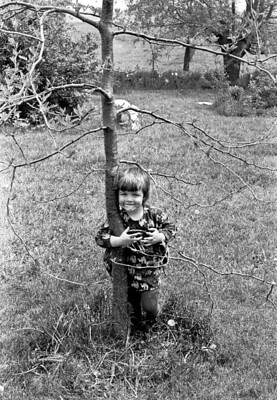
Honey locust, 1973
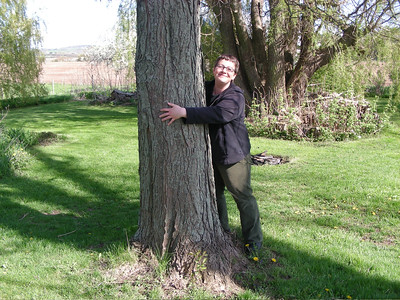
Honey locust, 2007 (it blew over in a wind storm around 2010)
=====
At the Landing itself (where there used to be a wharf, and where the tide is about 35 feet...) there was a magnificent elm:
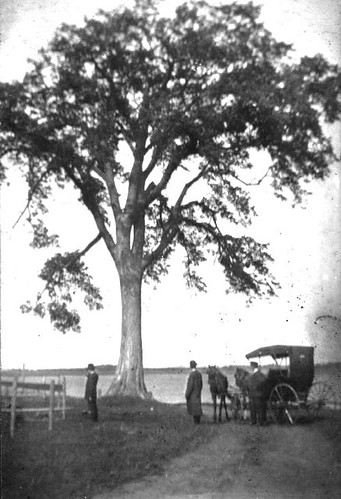
Horton Landing elm before ca. 1910

Alex Colville's 1956 "Elm Tree at Horton Landing"
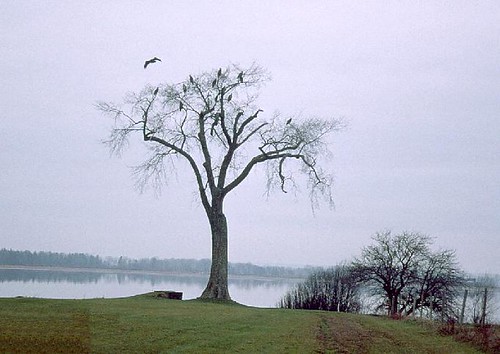
(yes, those are Bald Eagles awaiting what the tide might bring)
The Horton Landing site, formerly a Mi'kmaq meeting place, was a witness to the Deportation of the Acadians in 1755 and the arrival of the Planters in 1760. The tree had added meaning as a result. ====
Around the house at Horton Landing:
And in 1974 we imported a copper beech tree that Betsy's mother had grown from seed (from the giant copper beech in her yard in Winchester MA), in a 10-gallon bucket, a sapling 6 feet tall. Here's how it looked 44 years later:
Amanda McKay's pre-2010 photo
The last of the Horton Landing Elm, 2017 (see also my collection of last-of photos)
In November of 2010, the 175-year-old elm tree that once stood as a lonely sentinel facing the high tides of the Minas Basin was downed during a powerful storm.

a young elm at Horton Landing (there was a huge elm on one side of the driveway, and it dodged Dutch Elm Disease until about 2010, and finally had to be cut down)
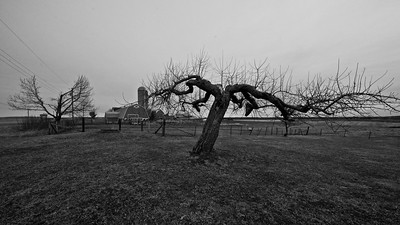
Horton Landing apples, 2018 (80 years ago the orchard had 100-odd apple trees)